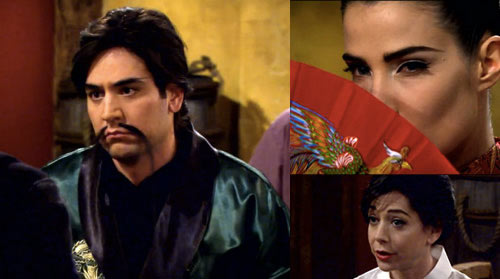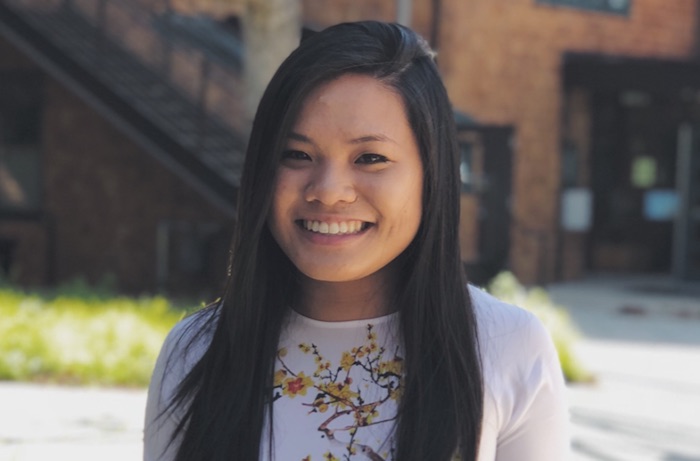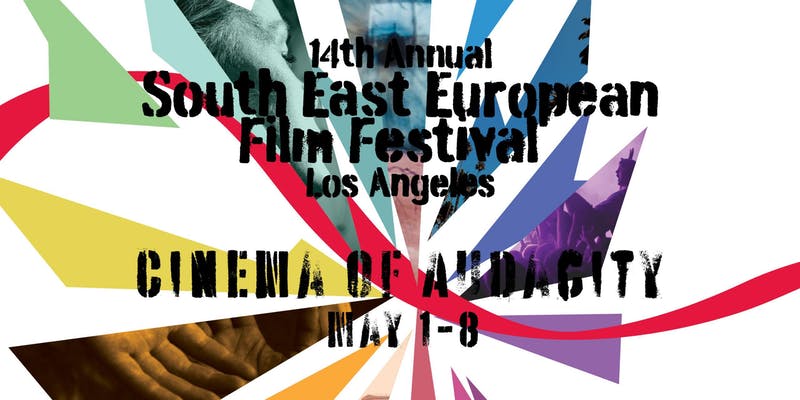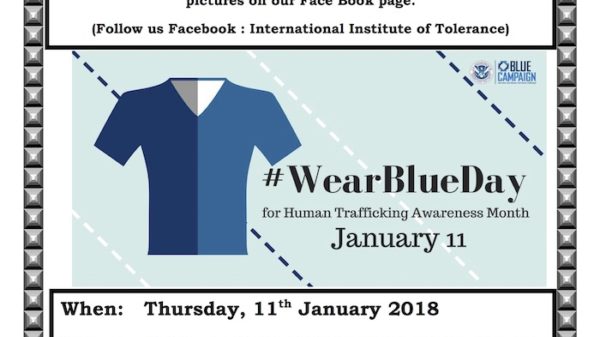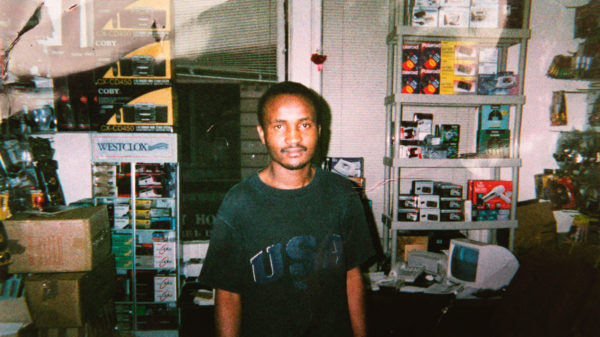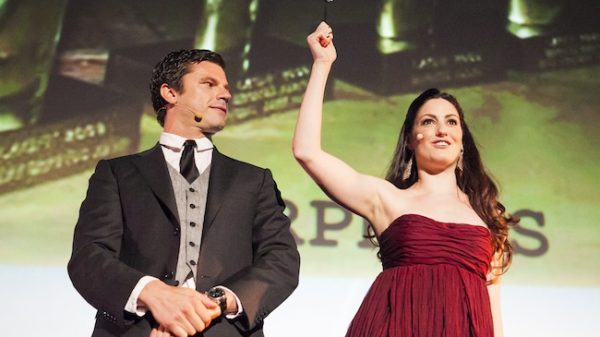New America Media, Commentary, Andrew Lam
In a recent New Yorker cartoon, a dog is shown lounging by a pool and saying to a pup: “Youtube’s one thing, but cats will never make it on the big screen.” A funny commentary, surely, but in America that statement could just as easily be applied to ethnic minorities, especially Asian Americans.
Cats and Asian Americans reign supreme on Youtube, but in Hollywood it’s another story: discrimination, stereotypes and exclusion are the norm for Asians, both on television and the silver screen. The most recent evidence of this came during the Golden Globe awards ceremony, where viewers were hard pressed to find an Asian face in the audience, let alone an Asian name among the nominees. The TV camera showed flashes of the marvelous Lucy Liu and comedian Ansari Aziz, as if trying to make sure that these two “cats” would somehow make up for the lack of Asian diversity. This year’s Oscar nominations offer another example. Not one name, with the exception of Japanese director Hayao Miyazaki, nominated in the Best Animated Feature Film category, is an Asian name.
As for racist stereotypes, just take for example the recent episode of “How I Met Your Mother,” a CBS sitcom, in which white actors put on yellow face like Fu Man Chu and spoke in exaggerated Chinese accents. The producers called it a tribute to kung fu, but Asian Americans took to their twitter feeds and called it out for what it is: pure racism.
Here are a few of the comments that were posted under the hashtag, #HowIMetYourRacism:
#HowIMetYourRacism is latest in long line of film & TV that somehow still finds it okay—no, finds it hilarious—to overtly caricature Asians.
@CBS With so few Asian Americans on TV and movies, has anything really changed since the 1920’s? #HowIMetYourRacism
#HowIMetYourRacism. “Yellowface? Orientalism? Fu Manchu? What Not okay @cbs.”
Wow, @HIMYM_CBS @CBS, your racist mockery of Asian people and culture is…wait for it…LEGENDARY! #HowIMetYourRacism
In this day and age it would be unthinkable for white actors to wear black face and make fun of, say, ebonics. The repercussions would be swift, and heads would surely roll. But putting on a yellow face is another matter – racist parodies of Asians somehow remain okay and acceptable in the imaginations of producers and writers.
Asians, furthermore, remain foreign enough within U.S. pop culture that such depictions go largely un-castigated — unless there is a public reaction strong enough to force the offenders, as was the case with the “How I Met Your Mother” debacle, to apologize.
That the show’s producers apologized at all is thanks largely to social media, which amplifies otherwise unheard-from populations and creates an equal playing field for ethnic minorities. In this realm, indeed, Asian Americans (and cats) dominate.
The reigning king of Youtube, for example, is the biggest cat of all – Korean pop sensation, Psy, has garnered nearly 2 billion views of his music video for the worldwide smash, “Gangnam Style,” and his follow-up single, “Gentleman,” has been seen by 625 million viewers. Psy is Korean and not Korean American, but his rise to success is giving hope to an army of would be Asian American entertainers.
Sam Tsui, for instance, who is half Chinese, is a bonafide Internet star, with an incredible vocal range. His rendition of Journey’s “Don’t Stop Believing” is nearing the 34 million mark on Youtube, and his version of “Just A Dream” with Christina Grimmie, another Youtube sensation, has a whopping 74 million hits. His large following online would make most professional artists turn green with envy.
Another Asian Youtube star of note, David Choi, began singing in his bedroom, often with cow-licked hair, but ended up being a guest on various TV shows, writing songs for Warner/Chappell Music, releasing three albums to date, and going on tour around the US and Asia. Then there’s Ryan Higa, who started out making silly skits with his friends in Hawaii only to eventually become a Youtube superstar. His videos average over 30 million hits each. He even produced and starred in two short films that sold out theaters in Hawaii and California.
And it’s not just on Youtube and social media that Asian Americans are making inroads. From the get-go, New Media forms have provided an opening for people of color, in terms of their representation in the media. This is especially true of “reality TV” programs — American Idol, Survivor and Top Chef among them. And Asian Americans don’t just get on reality TV shows — many of them actually win:
Jun Song won on Big Brother, Yul Kwon won Survivor, Kat Chang won The Amazing Race, Poreontics, an all-Asian troupe, won America’s Best Dance Crew, and Aarti Sequeria won The Next Food Network Star, just to name a few.
Of particular note are Vietnamese Americans, a group barely visible in American pop culture, who have nevertheless taken many top honors. Chloe Dao sewed her way to the top in Project Runway; Hung Huynh won on Top Chef, using fish sauce as the base ingredient. Last Comic Standing got Dat Phan, a Vietnamese American who made fun of, what else, his mother’s accent. Christine Ha, a blind Vietnamese home cook, whose soup made tough-as-nails Gordon Ramsey tear up, won the Master Chef competition, while Hung Huynh took Top Chef gold in Season 3.
Despite the success of Asians on Youtube and Reality TV, Asian American actors find scant roles in Hollywood scripts, and when they do they are often mindless, simplistic stereotypes. In a recent article in Policymic.com titled, “Why Asians are Fleeing Hollywood,” Dana Ter noted: “Whereas Asian-Americans are often times consigned to stereotypical roles in Hollywood, their biculturalism is an asset in Asia. As such, Asia has become the new Land of Opportunity for Asian-Americans trying to make it in the entertainment industry.”
One Asian American actor who gave up Hollywood and went to Hong Kong, where her parents were from, once told me that, “Hollywood loves to adopt Asian babies. They just don’t put them in their movies.” Angelina Jolie, Julie Andrews and Mia Farrow are just a few of the famous actors who adopted Asian children. Woody Allen, she said, “found it easier to marry his Korean stepdaughter than to put her in a movie.”
The bamboo ceiling exists, and it’s a bitter reality.
One is reminded of it constantly, such as when Mirai Nagasu, who took third place at the U.S. National Figure Skating Championships, was overlooked by the U.S. Figure Skating (USFS) committee, which selected Ashley Wagner, who came in fourth place, to compete in the Winter Olympics.
“USFS has never in history ignored the results of the Nationals in picking its Olympic athletes when injury was not a factor,” noted Jeff Yang on the Wall Street Journal. “But if Wagner’s ‘all-American’ looks played any role in her selection — and of course, we’ll probably never really know — the real irony is this: blue-eyed, blonde Wagner was born in Heidelberg, Germany. Nagasu, meanwhile, was born in Montebello, Calif.”
Or take the case of the “Jimmy Kimmel Live” show in which Kimmel engaged in a roundtable with children regarding the United States’ $1.3-trillion debt to China. When one of the kids suggested that the U.S. should “kill everyone in China,” Kimmel responded by saying, “That’s an interesting idea.” He later apologized after massive protests by Chinese Americans. (If the child had said, “kill all black people,” the segment most likely would never have been aired, but never mind.)
And yet, for all that bitterness, there’s the opportunity for exposure provided by New Media. For those who like to watch cats on Youtube, there’s always a steady stream of new talent. And while they may not be signing big Hollywood deals, they are creating a kind of horizontal, post-modern conversation that is challenging the Hollywood notion of what talent looks and sounds like. These social media and reality personalities are beyond anything imagined by the big money producers, and they are giving old Hollywood a run for its money.
Some “dog and cat” videos on Youtube are counterintuitive in that the animals convey a close relationship, getting along splendidly — cuddling, playing and sleeping together. Those videos offer a reminder that the tension between dogs and cats exists primarily in the mind, and in stereotypes. In that respect, Hollywood could certainly learn a lesson from watching Youtube.
Andrew Lam is editor at New America Media and the author of “Perfume Dreams: Reflections on the Vietnamese Diaspora,” “East Eats West: Writing in Two Hemispheres,” and “Birds of Paradise Lost,” a collection of short stories about Vietnamese refugees on America’s West Coast, which won the Pen/Josephine Miles Literary award.

